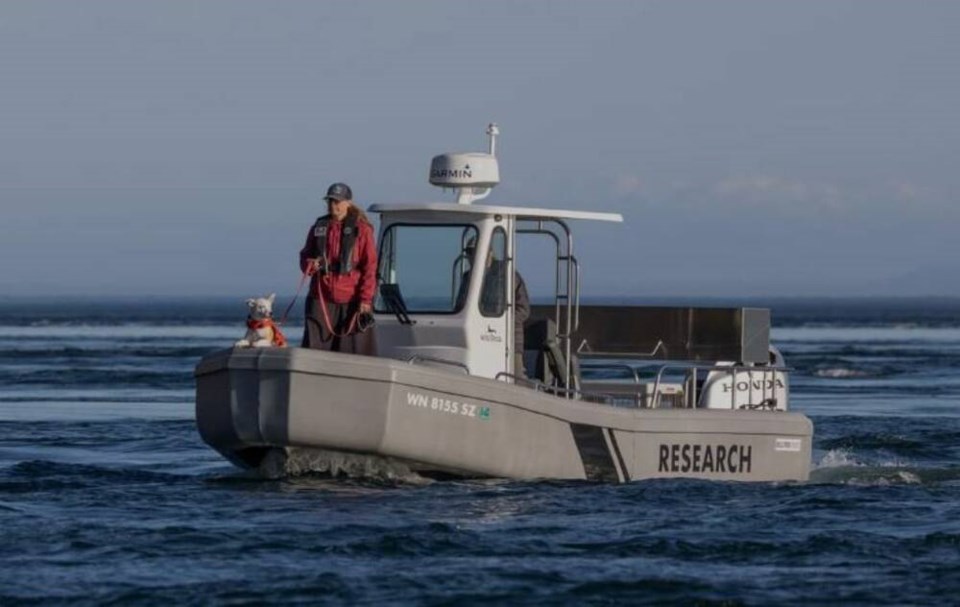Eba the dog started her life on the streets of Sacramento. Now, she spends much of her time at the front of a boat in the Salish Sea, sniffing out killer whale poop.
Eba’s owner is Deborah Giles, a killer whale scientist with the Seadoc Society, which uses science and education to advance the health of marine wildlife and their ecosystems.
The pair will be on Pender Island Friday evening, where Giles is scheduled to give a talk called From Poop to Policy, about what feces can tell us about the health of individual southern resident killer whales and the endangered population as a whole.
Giles’ sister found Eba in Sacramento and Giles adopted her, bringing her to San Juan Island, where she lives.
She and her husband, Jim Rappold, trained Eba to pick up the scent of whale poop using a previously collected sample, teaching her to think of play time when she catches a whiff of the marine mammal’s excrement.
The whale-poop-sniffing canine stands at the front of the research boat while Giles and her husband drive downwind of a path left by killer whales.
Eba alerts the scientist with a change in behaviour when she detects a sample left in the water.
“In a nutshell, we follow her nose to the scat sample,” Giles said.
An ideal sample looks like thick pancake batter and is about the size of a saucer for a tea cup splayed out on the surface of the water, but it can also be brown and as small as a lentil, she said.
Giles then scoops the poop out of the ocean using a lab-quality plastic beaker on the end of a pole, skimming the surface of the water. She decants the fecal matter into tubes, which are put into a centrifuge on the boat and spun to separate the sample from sea water.
The samples are kept in a cooler until they’re back on land and put in a deep freezer.
“Those are the ones that we love the most,” she said.
While there are other scientists collecting and analyzing whale poop, Giles said hers is the only team she knows of that works with a scent-detection dog. The method allows them to collect scat without getting close to the animals and disturbing them with their presence.
Without the dog, collecting fecal samples generally requires following closely behind whales, but because one of the main threats to the endangered species is vessel disturbance, she doesn’t want to be part of the problem, Giles said.
The samples are tested for hormones indicating stress, pregnancy and nutrition, as well as toxicants. Giles also collects breath droplets hanging in the air using a drone that swoops down after a whale has exhaled and dived back down.
“We’re trying to create individual health records. Just like you have a health record with your doctor,” she said. “It’s really trying to get a very, very clear idea of what’s happening with the individual whales.”
The aim is to take those individual records and look at the collective health of the southern resident killer whales, which face threats due to lack of prey, particularly Chinook salmon, physical and noise disturbance from vessels and chemicals in their environment and food chain, Giles said.
“All of that information is information that we can give to managers in Canada and in the U.S. to help drive policy to hopefully recover these whales,” she said.
If the whales are healthy and thriving, it means the habitat is healthy, which is good news for people as well, she said, because any toxic chemicals affecting killer whales also affect anyone who consumes fish from the Salish Sea.
Giles’ talk, part of Ocean Week Victoria, runs from 7 p.m. to 9 p.m. Friday at 4418 Bedwell Harbour Rd.



